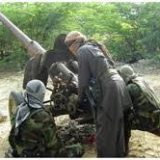UNHCR : 130,000 flee due to insecurity and drought in Somalia
The UN refugee agency reported on Tuesday that forced evictions, drought, conflict and lack of livelihoods have prompted more than 130,000 Somalis to flee their homes so far this year, and displacement within Somalia and across its borders shows no signs of easing.
“The vast majority – some 107,000 – are internally displaced in Somalia; a total of 23,000 newly arrived Somali refugees have registered in Yemen, Kenya and Ethiopia during the first eight months of the year,” UNHCR spokesman Babar Baloch told journalists in Geneva. “Insecurity was the main cause of internal displacement, with some 38,000 people fleeing their homes because of military conflict,” he added.
An estimated 7,000 people fled a military offensive in south-central Somalia in the first eight months of the year. While displacement is likely to be temporary, with people returning to their homes once it is safe, many still require assistance when displaced. These efforts are, however, hampered by limited access to towns affected by military activity, with airlifts often the only way to get supplies to people in need.
Baloch said the forced evictions of internally displaced people (IDP) from both private and government-owned land and buildings had uprooted almost 33,000 people. Some 15,600 were affected in the port city of Kismayo earlier this year and 18,300 people were evicted in the capital Mogadishu in recent weeks.
“UNHCR is engaged in dialogue with its counterparts among the Somali authorities to ensure that such evictions do not violate basic human rights. UNHCR distributed basic relief items to 3,000 displaced families in Kismayo in recent weeks, but additional distributions are required,” the UNHCR spokesman said.
He added that many people were living in sites lacking basic services. They slept in shelters made of sticks, grass and cardboard. Baloch said incidents had been reported of sexual and gender-based violence, including rape, against girls and women by militias operating outside the settlements.
In 2014, Yemen has received 11,000 new arrivals by boat across the Gulf of Aden and the Red Sea, almost matching the figures recorded for the whole of 2013. Most of the new arrivals come from the six regions in south-central Somalia most affected by drought, food insecurity and poverty. Almost 9,000 Somalis have arrived in Kenya while Ethiopia has registered more than 3,000 Somali refugees arriving this year. The total number of Somali refugees in the region stands at 957,000.
“This continuing displacement comes at a time when the internally displaced are bearing the brunt of the current food insecurity crisis in the country. IDPs spend proportionately more – up to 75 per cent – of their available income on food, compared to Somalis in rural and urban communities.
According to a recent survey by the UN’s Food and Agriculture Organization (FAO), IDPs have the highest rates of severe acute malnutrition, while malnutrition rates are critical in seven of the 13 IDP sites surveyed. The under-five death rate among Mogadishu IDPs is six times the average.
“While UNHCR and other agencies are scaling up response, our Somalia operation requires more than US$40 million, and remains underfunded at 38 per cent,” Baloch noted



















